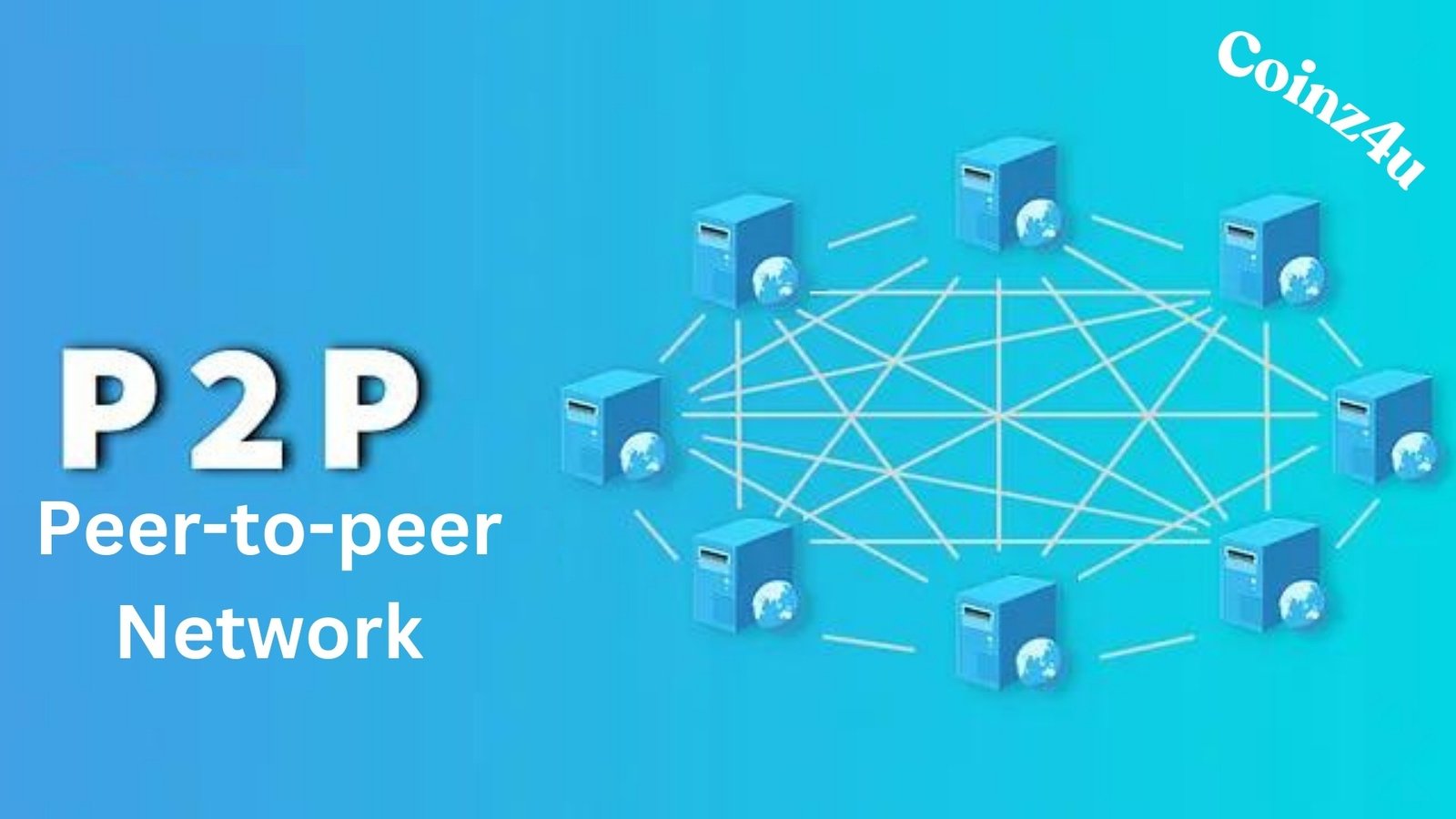Peer-to-peer (P2P) Blockchain Networks—How do they Work?

Peer-to-peer (P2P) Blockchain Networks—How do they Work? The idea of decentralization underpins peer-to-peer (P2P) technology, eliminating the need for a central server or middleman in financial transactions. Bitcoin (BTC) $63,271 uses peer-to-peer technology, meaning the network does not need an administrator to keep tabs on user transactions. In its place, the network’s peers work together to process transactions and keep track of Bitcoin.
In a blockchain network, “peers” are the nodes or computers that are equally powerful and execute the same operations. Blockchain in a decentralized peer-to-peer system verifies data by having each computer keep a full copy of the ledger and checking it with other nodes. It functions as a decentralized ledger for one or more digital assets. On the other hand, no one except the bank is privy to the details of a customer’s bank transactions.
The P2P network is essential to blockchains because it ensures the anonymity of transactions and the security of the consensus algorithms that power them. It should be noted that no universal peer-to-peer protocol for blockchains has been proposed. Rather, peer-to-peer protocols have been created and modified by several cryptocurrencies.
How do P2P Networks Work?
It has already been stated that decentralised blockchain networks do not have a central authority. On the contrary, every node (or peer) is linked to every other node. Nodes in a mesh network are connected in a “flat” fashion; the network lacks any hierarchical structure. Because nodes in a P2P network are always exchanging services with one another, the inherent openness, decentralization, and robustness of the network are based on the principle of reciprocity.
P2P networks differ from conventional client-server architectures in that every node must perform dual roles, connecting other nodes and providing them with data. In a client-server setup, the client always retrieves files from a central server. The opposite is true in a decentralized system, where every node is a server capable of downloading and sharing content. Peer-to-peer (P2P) Blockchain Networks: The efficiency, safety, and speed of a peer-to-peer (P2P) network are because a single node may execute both the sending and receiving operations simultaneously.
On top of that, P2P design works best in a blockchain network with many active peers so that new peers can easily find others to connect to. Even if many peers were to abandon the network, the remaining peers could handle the load. On the other hand, when there aren’t many people to talk to, you have fewer resources at your disposal. If a file is popular, meaning that many peers share it, it may download faster with a peer-to-peer (P2P) file-sharing application.
Types of Peer-to-peer (P2P) Networks

As explained below, a P2P architecture can be categorized into structured, unstructured, and hybrid peer-to-peer networks.
Structured peer-to-peer networks
The structured interactions between the nodes in this network allow for pinpoint file searches, even if the requested content is temporarily unavailable. However, in structured P2P networks, there is centralization of some kind because it is an organized system. Structured peer-to-peer networks offer straightforward data access but are more difficult to set up than their unstructured counterparts.
Unstructured peer-to-peer networks
Participants in such a network are free to join or exit at their leisure because there is no predetermined structure for the nodes. Also, because there isn’t much of a framework, people start talking to each other. On the other hand, unstructured P2P networks necessitate a large amount of CPU power to keep the network running smoothly since all nodes must be active to support a high volume of transactions.
Hybrid peer-to-peer networks
This P2P network style combines the classic client-server model and P2P networking elements. For instance, it enables the central server to locate a node. The client-server architecture is a framework for distributed network applications that use internal computer networks or the Internet to share duties amongst multiple users.
Benefits of P2P Blockchain Networks
With no central server or other point of failure in a decentralized network, peer-to-peer networks have several advantages over the old client-server model. In contrast, data loss could occur in a client-server arrangement in the event of a server failure. Since P2P networks are decentralized and do not rely on a single server, they may be able to resist attacks to a certain extent. Unlike traditional banks, blockchains built on a peer-to-peer network model cannot limit the actions of network nodes.
P2P networks also save money as they don’t need an operating system. In addition, P2P networks are extremely robust against changes in the makeup of their peers; for example, if a large number of new peers suddenly join the network, it can easily handle the increased demand. Furthermore, the overall network is relatively unaffected by removing a single peer.
Digital content distribution, such as games and software, is one application of peer-to-peer (P2P) blockchain networks. Another decentralized system cryptocurrencies employ is peer-to-peer (P2P) networks for user transactions. P2P networks include not just the Bitcoin network but also BitTorrent and Skype.
Limitations of P2P Blockchain Networks

Although peer-to-peer networks have many benefits, they also have certain drawbacks. Given the lack of a central server, any compromised node might potentially infect all the other nodes in the network. Because no authoritative body oversees the system, nodes can also distribute copyrighted material.
Furthermore, the software can be upgraded to conform to the new rules, but anyone can construct parallel networks—a hard fork of the blockchain—if they so desire. The proof-of-work Ethereum protocol (ETHW) was developed by a Chinese miner after the Ethereum Merge.
Many users in P2P networks often make use of the shared resources of other nodes while keeping their resources private. These “leechers” are nodes that don’t contribute anything to the network and can encourage immoral and unethical actions.
Is P2P Crypto Trading Safe?
On decentralized exchanges (DEXs), buyers and sellers can engage in peer-to-peer trading. Users have a greater say over pricing and payment options on peer-to-peer bitcoin exchanges. However, the variety of cryptocurrencies that may be exchanged on peer-to-peer marketplaces like Binance is limited, and this freedom comes at the expense of liquidity compared to established exchanges.
The lack of a middleman, zero transaction fees, and changeable rates attract cryptocurrency traders to P2P trading. Nevertheless, in reaction to governments worldwide attempting to regulate the flow of funds associated with digital currencies and exert influence over crypto markets, numerous countries intend to ban the trading and transaction of cryptocurrencies.
P2P crypto markets can evade these rules by trading on a global market while maintaining a local presence. Because escrow smart contracts protect P2P transactions, neither side may commit fraud. A third-party smart contract known as the escrow receives tokens before a transaction. The escrow holds the deposited tokens until all payment requirements are fulfilled. Both parties must deliver the agreed-upon service or product and receive payment.
Even with all these safeguards, P2P trading still has its share of risks. For instance, con artists can use P2P payment services’ chargeback features to get their hands on your money. So, to avoid falling victim to peer-to-peer trading scams, doing your research on P2P marketplaces is a good idea.





